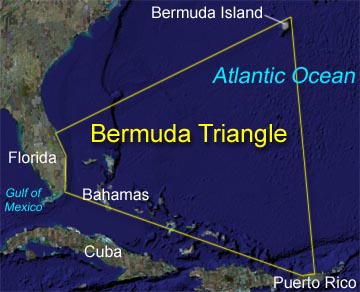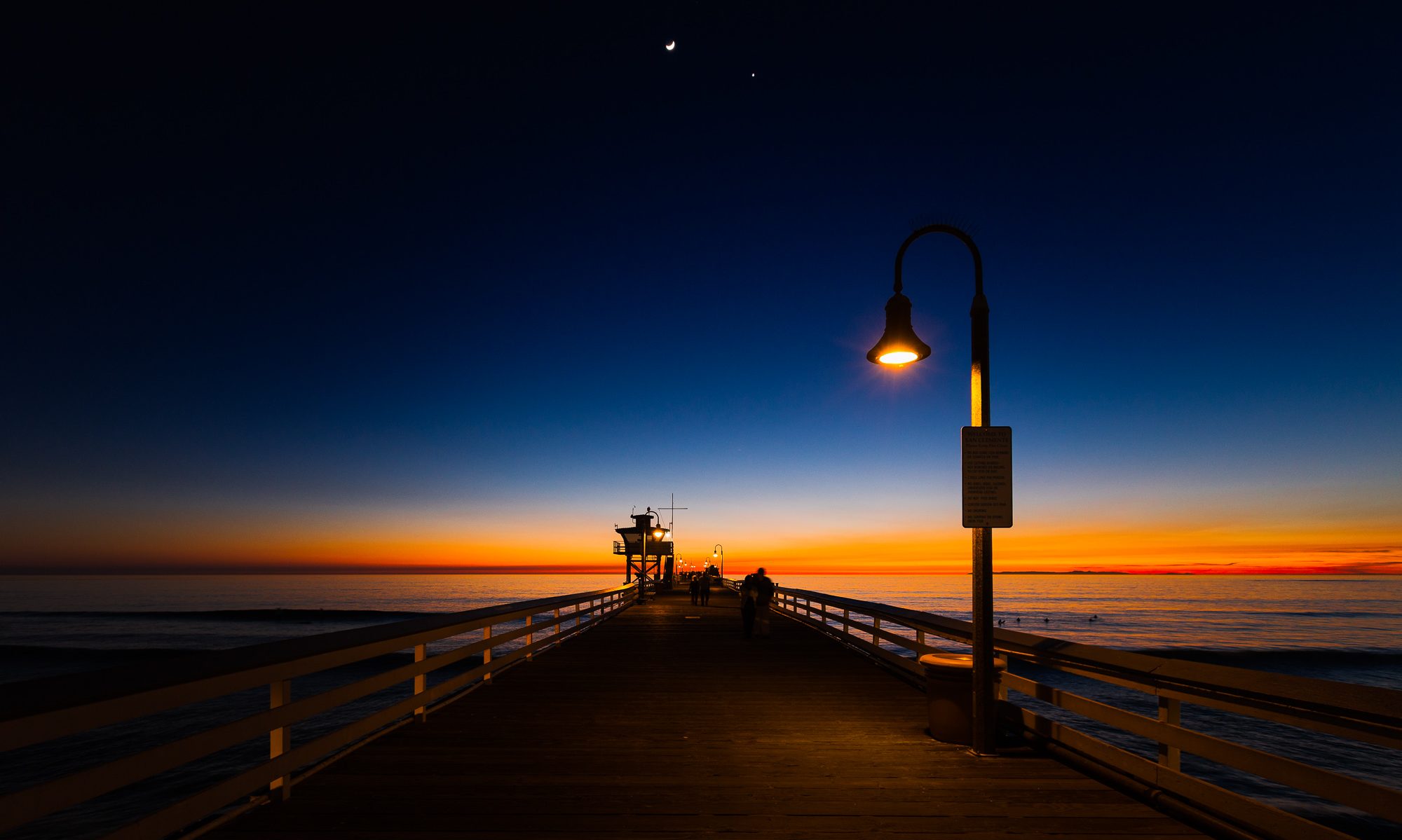The Discovery Channel series Curiosity had an episode this past Sunday called “The Devil’s Triangle,” appropriating the more melodramatic name we have for the section of ocean inside the lines connecting Miami, Bermuda, and Puerto Rico. It is supposedly the planet’s most voracious region for devouring ships and planes.
 The film Close Encounters of the Third Kind opens with a reference to the Triangle’s earliest and most famous victims, the TBM Avengers of Flight 19. They disappeared while flying a training mission out of Pensacola. It is an article of faith among believers that the disappearance of five small Navy bombers in an area known for its unpredictable weather is somehow “mysterious.”
The film Close Encounters of the Third Kind opens with a reference to the Triangle’s earliest and most famous victims, the TBM Avengers of Flight 19. They disappeared while flying a training mission out of Pensacola. It is an article of faith among believers that the disappearance of five small Navy bombers in an area known for its unpredictable weather is somehow “mysterious.”
This show actually triggered feelings of nostalgia for me, reminding me of the cheesy documentaries, usually narrated by Rod Serling, that I saw as a child. Only this show had actual experiments instead of just sinister music and Serling’s purple delivery. They were attempting to test various theories to explain the disappearances of various aircraft, ships, and boats in the region. They couldn’t test the UFO abduction and time portal theories for obvious reasons, so they had to stick with the rather mundane. The only really interesting test revealed that a 40-foot rogue wave could easily sink a 10-foot sailboat. I think I knew that. The interesting thing about the test was the 1,000-foot wave tank in which they did it, not the result.
The other tests told us that bubbles from a sudden release of subterranean methane gas couldn’t sink a ship. Unless it was already sinking. A guppy could sink a boat that was already sinking. Finally we learned that a lightning strike to a plane’s fuel tanks, under the right circumstances, will blow the plane up. Made for some cool slo-mo video, but hardly an earth-shattering revelation.
Careful listeners, a demographic which probably does not include people predisposed to believe such hogwash, hopefully picked up on two deceptively innocuous facts. The experiments were done with a small sailing boat and a small private airplane. Why? Because according to statistics, these are the most likely kind of craft to vanish in the Triangle. Okay, back up. Are you saying that small, privately-owned boats and planes, which are the most vulnerable to extreme conditions and the most likely to have inexperienced people at the controls, are the most likely to go missing in a region known for its volatile weather? Wow, that is mysterious.
In another example of how statistics can be used deceptively to prove just about anything, the narrator tells us that, over the last 70 years, approximately 100 airplanes have disappeared in the Triangle. That sounds like a lot, until you do the math. It works out to 1.4 planes per year. In a region with such violent weather, that sounds like we’ve gotten off lightly. I would expect that those 100 aircraft are front-loaded into the beginning of those 70 years, and the number of disappearances will climb much more slowly than the number of years, as technology improves and flying everywhere, including the Bermuda Triangle, becomes much safer with time.
A check of a web site, maintained by a believer to be fair, shows that in the 70s, there are between three and five disappearances per year, while recent years have seen the rate decline to less than one per year. Clearly, as technology has improved, planes and ships are less likely to go missing and those that do are more likely to be found. Most so-called “mysterious” disappearances are mysterious simply because there isn’t enough information to piece together a satisfying explanation.
The sense of mystery was further undermined when they showed a map of the regions with the spot of each disappearance marked. The flags were more numerous at the edges of the triangle than inside it. They also counted disappearances in the Gulf of Mexico, which lies outside the triangle. Why not count the Great Lakes, too? Most embarrassing was the fact that the disappearances from the Gulf were just about as common as disappearances from the Triangle proper, if not more so.
The reality is that, when you draw a triangle with three populated areas at each corner, accidents, mishaps, and tragedy are going to be more common in that region than in a similarly-sized, randomly chosen area out in the middle of ocean.
Why am I going on about this?
I like critical thinking. And I’d like people to apply similar incredulity when they’re listing to, for example, Jenny McCarthy weep about how the MMR vaccine caused her son to be autistic. I don’t want to belittle Ms. McCarthy’s suffering, but latching on to such simplistic explanations shortcuts genuine inquiry into the real causes of autism.
So rather than simply take the word of a former Playboy Bunny about a complex medical issue, it helps to consider that a comprehensive Danish study found no higher incidence of autism in MMR vaccinated children compared to children who had received different vaccinations for the same diseases. It’s also useful to remember that the MMR vaccine is administered to most children at the same age. Autism symptoms usually manifest around a similar age, meaning that the close proximity of vaccination to symptoms is very likely but purely coincidental. Post hoc ergo propter hoc.
A Jewish girl reaches Bat Mitzvah at age 12. If she happens to get her first menstrual cycle shortly thereafter, and we follow the logic of Ms. McCarthy and the rest of the antivax movement, we would have to conclude that the Bat Mitzvah ritual causes menstruation.
The next time someone tells you that vaccination causes autism, that Bush Administration faked 9/11, that the CIA killed JFK, or that Obama is a Socialist Muslim Black Panther, remember that anyone, even people we know, love, and trust, can be completely full of shit. Never take any one person’s word for anything, even if they sound like they know what they talking about.
